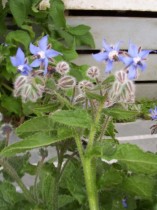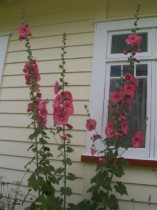Helping our honey bees survive
by Ginny Clayton
Our honey bees are an endangered species – we need to do all we can to help them fight the battle to survive.
Without bees, we are in danger of losing important crops that we rely on for food. Spraying even with natural ingredients can kill bees – if using the natural pyrethrum spray for instance, it must be done either early in the morning or late at night when the bees are not around. Plant many blue flowers in your gardens – this is the colour that bees and other beneficial insects are most attracted to. Lots of our native trees and shrubs have flowers that are loved by bees, so include them in your gardens as well.

Dill in flower
There are many herbs that we use ourselves that the bees enjoy as well – all the culinary ones, thyme, rosemary, oregano, etc so having them in our gardens is now twice as important. Parsley and basil flowers are also loved by these little insects, so let them go to seed for them. Parsley will self seed if it likes where it is planted.
The most well known bee plant is borage. This herb is known as the ‘friendly herb’ and once you plant it will self seed for you. I find it is never a nuisance, as it seems to know where to pop up! It is easily weeded out if necessary. This herb comes in 2 colours – blue and white. The white variety is the stronger grower, and I find that the bees go to it just as much as to the blue one. Comfrey, a cousin of borage, also has flowers that the bees love.

Borage flowers
Lemon balm is another favourite – this herb is also useful for helping your bees stay at your place; rub the inside of their hive with lemon balm leaves and they will stay home. This method has been used for many years.
There are many other herbs that have flowers the bees love, including anise hyssop, Jerusalem artichoke, bergamot, Elizabethan gillyflower, elderberry, hyssop, Jacobs ladder, Joe Pye weed, rosemary, clary sage, soapwort, comfrey, nasturtiums, yarrows, all annual herbs, and all the allium (onion) family.
Our wild herbs also encourage bees, including clovers, chickweed, cleavers, dandelion, fumitory, pennyroyal, plantains and selfheal. These herbs also have properties that are great for us humans as well.
Our Heirloom flowers in their original form are also important to bees and other insects, as they are good strong growers with beautiful perfumes -this is one of the reasons it is so important to save these old varieties. They include the old tall hollyhocks, foxgloves, the old scented tall wallflowers, English lavenders, French lavenders.

Coriander

Hollyhocks
If you wish to learn more about bees, contact your local beekeepers club.

